This page was started based on an analysis of dodge build cards performed by Juan Pelaez. A caveat from him in the beginning: This analysis is based on a limited number of cards available at the moment of the analysis, therefore all conclusions are preliminary.
In addition a build card template created by Richard is used in this page.
The build card contains a multitude of important information about the Dodge as e.g. schedule number, sales order number, spec. o. number, body model in the top row or date built, shipped date, serial number, motor number, body number in the bottom row.
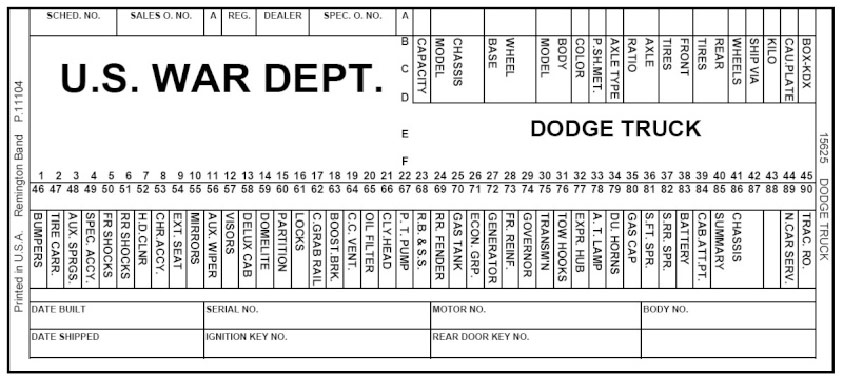
The information is printed or handwritten on the card in the top, middle and bottom row
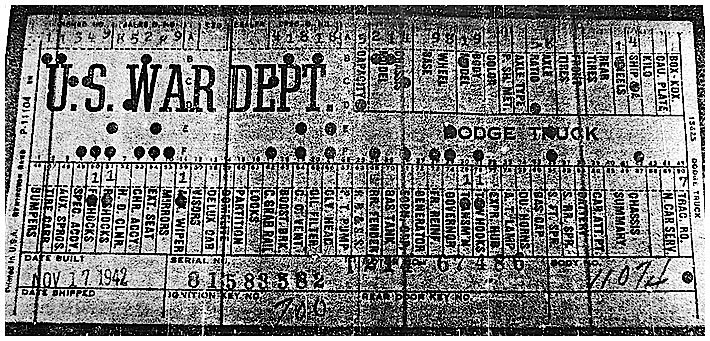
The information from the bottom and middle row is also encoded as a form punch card by holes punched into the card, presumably for automated sorting/processing.
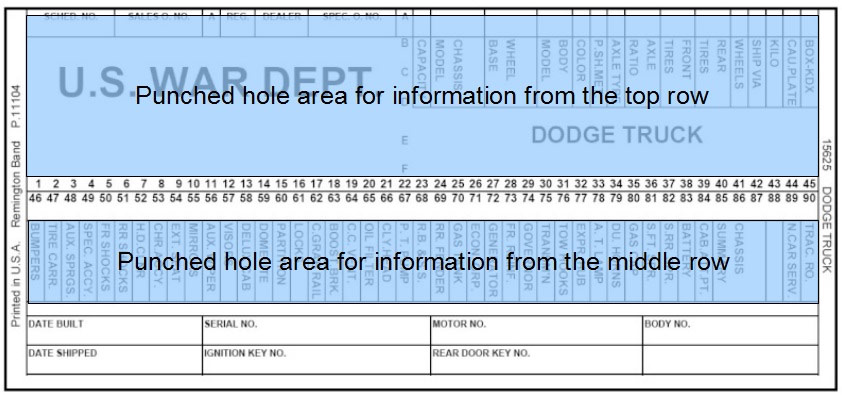
Decoding the punched holes, which might be useful if the written information is no longer cleary readable, can be done with the help of this table:
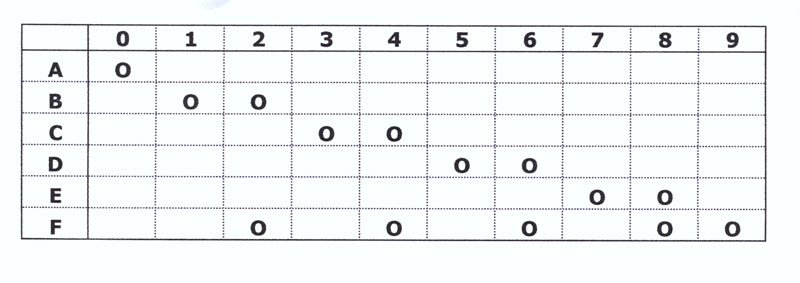
Each number from the top row is duplicated in the same column by the punched holes. The example below illustrates this with a fictive dealer number.
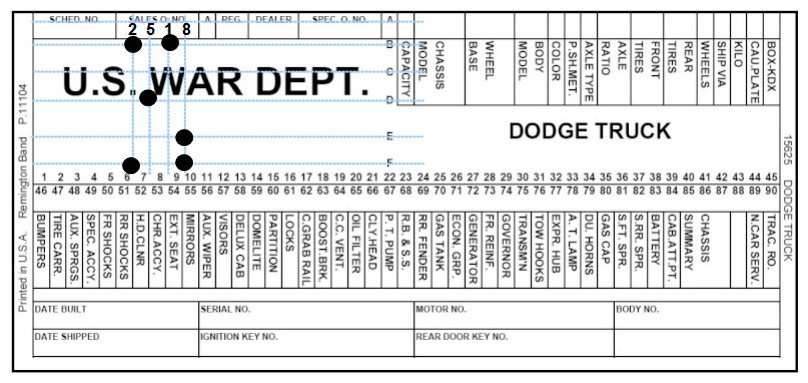
Some entries on the build card are put on various parts of the vehicle. The serial number (VIN) is punched with punch stamps on the external left front side of the chassis and the engine block is engraved with the motor number on its front left side.
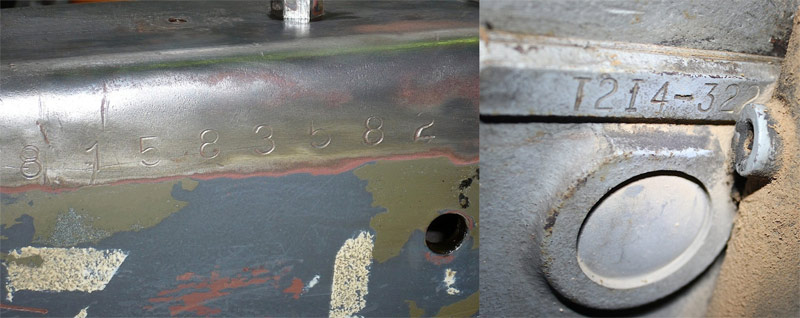
There is another marking on the exterior of the chassis, located on the drivers side towards the back wheel. This engraving is the part number of the frame and identifies the chassis model.
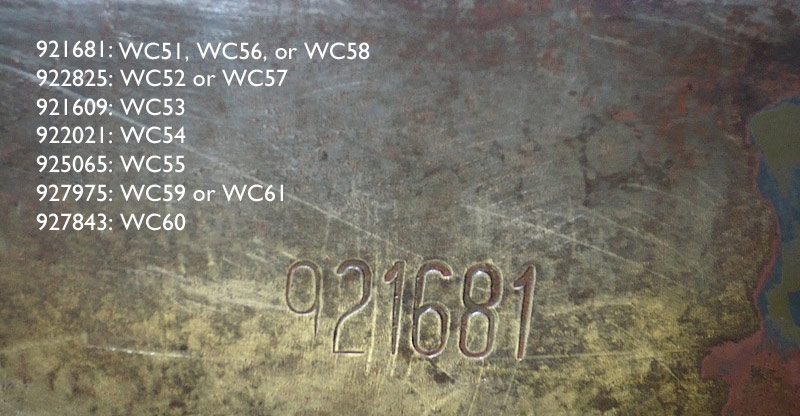
From the ordnance supply catalog and standard nomenclature list (ORD9, SNL G502):

Last but not least there is an identification body plate located closely to the hood support above the regulator.
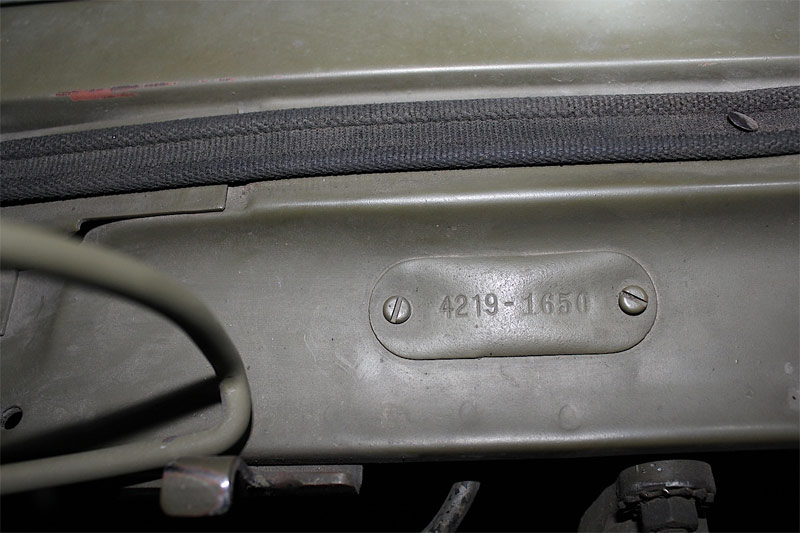
This number XXYY-ZZZZ uses the template series number (XX) model number (YY) - body number (ZZZZ). The series number 42 is the designator for the ¾ ton WC series and generic for all vehicles of all production years.
The model number - same as in the top row of the build card - describes the model
Model Numbers: |
| 10 = Flat faced cowl |
| 12 = Closed cab |
| 13 = Panel van (also first hand-converted VC6 Carryalls) |
| 19 = Reconnaissance/Command Car (WC56 or WC57) |
| 29 = Radio Reconnaissance/Radio Command Car (WC58) |
| 39 = Ambulance (WC54) |
| 49 = Carryall (WC53) |
| 56 = Closed cab (half ton) |
| 62 = Closed cab |
| 66 = Express body with transverse rear seats (WC51 or WC52) |
| 76 = Express body with no rearseats |
| 86 = Gun motor carriage (WC55) |
| 90 = Flat faced cowl with bucket seats (WC59, WC60, or WC61) |
| With caveats and to be confirmed: |
| 70 and/or 96 for 6x6 chassis (WC62 & WC63) |
| 50 for KD Ambulance chassis (WC64) |
The body number - found in the bottom right of the build card usually in hand writing - is a consecutive number assigned to all bodies of a particular type, e.g. the 1650th vehicle of this type produced
The serial number from the build card is also stamped on the plate on the dashboard.
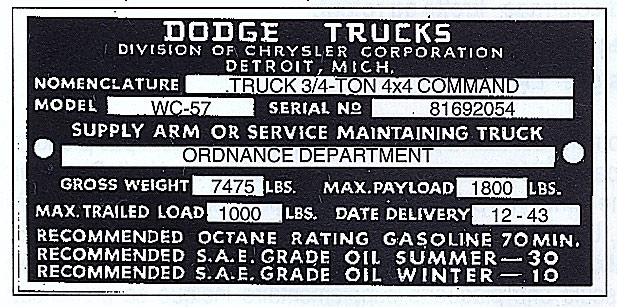
In addition to that command cars have the cabin number engraved on the firewall at the front of the cabin. This appears to be a serial number from Budd, the supplier of the cabin; it does not match the body number on the identification plate and does not seem to be correlated to any of the dodge numbers on the build card or vehicle.
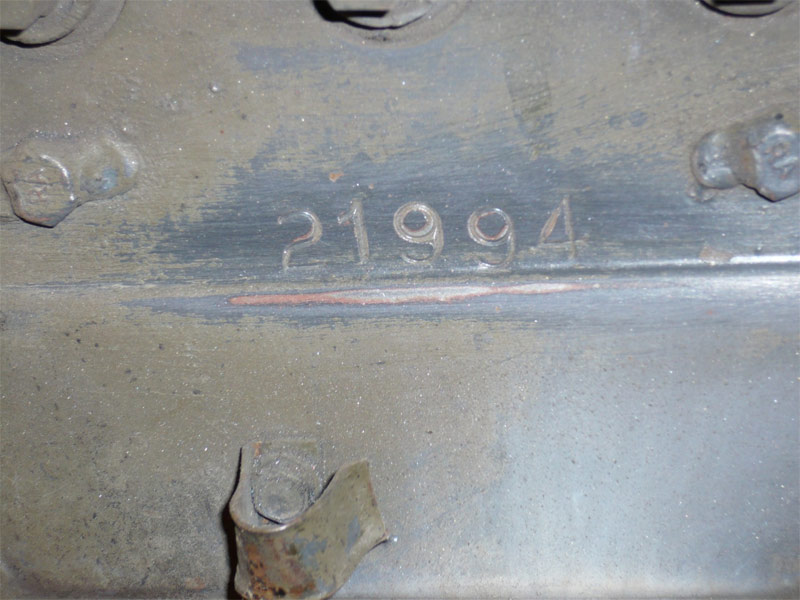
When you receive a build card from Chrysler, you will have a lot of information as built date, the chassis number, motor number and much more, but the exact model, e.g. is it a WC51 or WC52 or was it originally equipped with a winch or not, is less obvious from the build card.
To clarify that you need a more in-depth look at the build card. There are two entries on the build card that allow us to figure out whether it was originally equipped with a winch or not: Sales order number and spec order number.
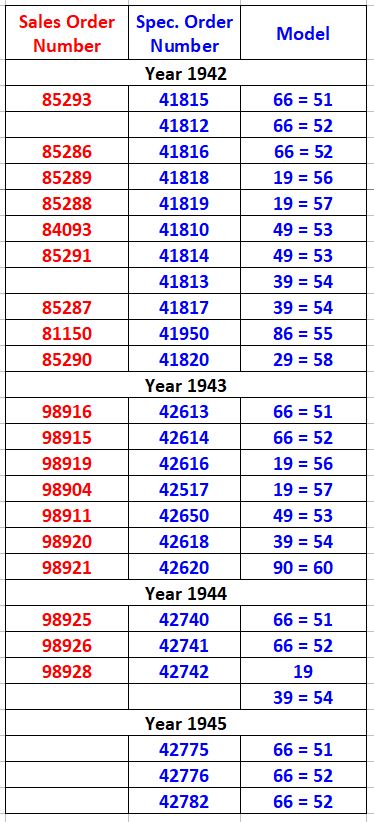
This conclusion is supported by technical drawings from Dodge. Exemplary plans of a WC52, WC53, and WC54 from 1942 are shown below with the S.E.O. Number - whose first five digits are identical with the spec. order number - in the top right corner.
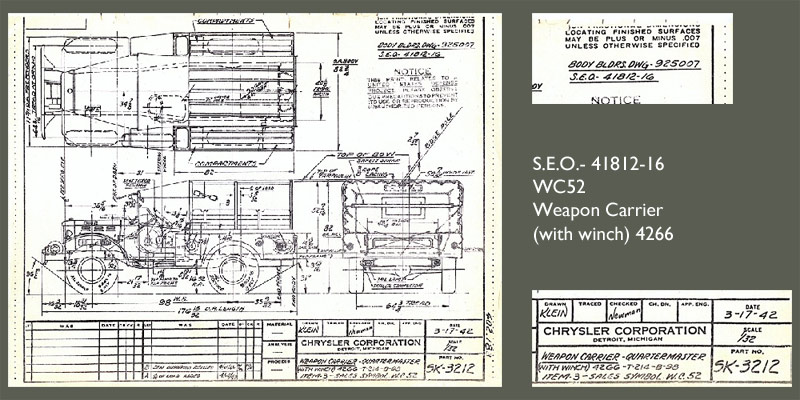
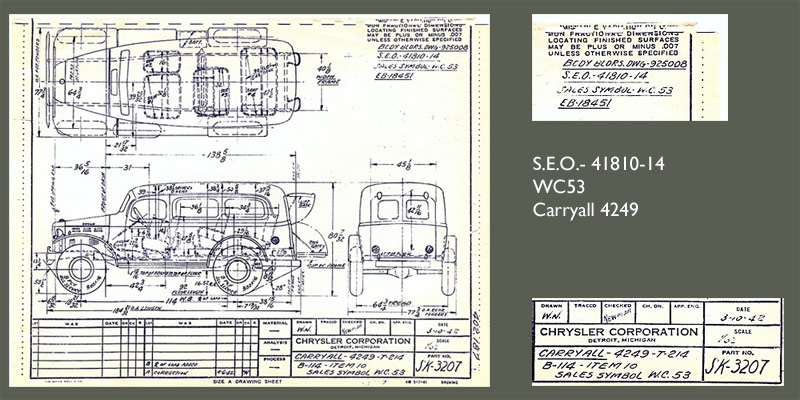
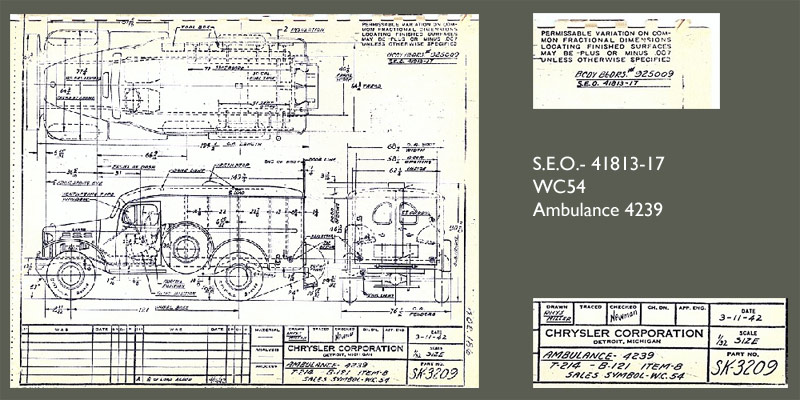
After production the vehicles were taken to open-air storage areas and put in stock, awaiting the finishing details as the US registration number on the hood and the final acceptance inspection by a government inspector.
It is not entirely clear what was stated as the date built on the build card, the day it left the production line, the day it was fully completed, or the day the US registration number was painted on it. This seems not to have been clearly defined and for now the date built entry is assumed to be the date when it was completely finished and ready to be packed for shipment.
Below the date built is a field for the date shipped, which could be assumed to hold the shipping date, but in reality this does not seem to be the case. Comparing vehicles that still have the original serial number on the hood with this entry on their build cards shows that this field contains in handwriting the US registration number.
| 60002 | 85288 | 91 | 196 | 41819 |
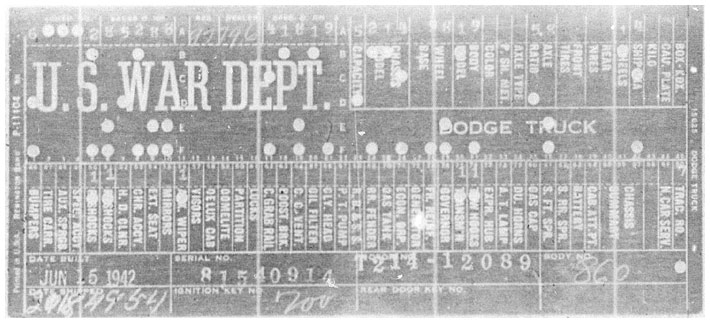
| Jun 15 1942 | 81540914 | T214-12089 | 860 |
| 20184954 | 700 |
This WC57 with series number 81540914 still has the US registration number W-20184954 on the hood. Luckily the history of this vehicle is known: Dodge received the order for this WC57 under the number W-398-QM-11422 as part of an order for a batch of 916 units, registration numbers assigned were W-20184953 to W-20185868 and this dodge was the second unit from this batch.
Any comments that shine more light on the interpretation of the build cards are appreciated.